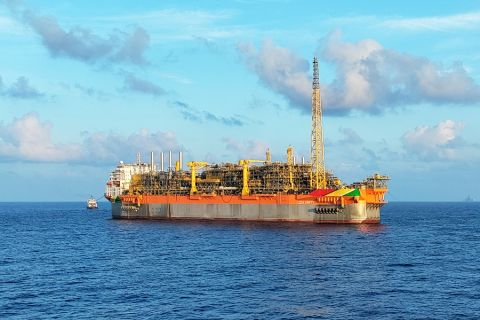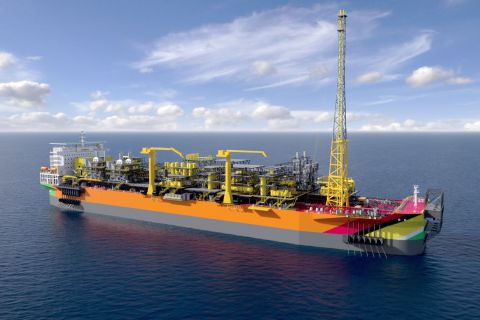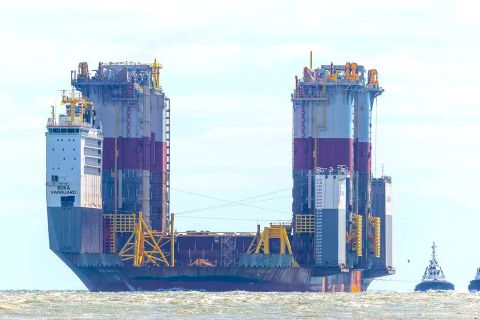?Significant new non-OPEC oil projects around the world are the hope of end-users who wish to balance OPEC supply with other sources. But, many of these non-OPEC fields and projects appear to be stalling out.
They are falling short of plan for both timing of first output and peak productive capacity. And, when they do finally come onstream, the average decline rate appears to be speeding up compared with that of older fields, according to a new study by Houston-based energy investment-banking firm Simmons & Co. International.
Analyst Robert A. Kessler and team analyzed older fields to gauge how new fields’ performance might unfold.
He found that, for 55 large projects with production start dates from 1989 through 2008, the projected peak output falls 28% short of design, and these projects are four times more likely to be delayed than accelerated.
“In our sample dataset of 55 fields, 77% of them never reached peak design capacity on a full-year basis. In fact, the average project peaked at 72% of design capacity,” he says.
For example, Brazil’s huge Albacora Leste Field, whose full-scale production began in 2006, has a capacity of 180,000 barrels a day from an FPSO (floating production, storage and offloading) vessel. However, production peaked in February 2007 at 170,000 barrels a day, and it declined 22% in the subsequent 13 months.
The company also analyzed a dataset of monthly production histories for 2,634 existing fields covering some 70 years of production. It found that, on average, fields that have attained start-up since 1970 peaked in their second year of production (their first full year).
But, the decline rates are worsening as fields now tend to reach their peak sooner in their life cycle and then decline faster for the first five years thereafter. The average annual decline rate averaged 7% for fields that began producing since 1980. But, the average decline has been twice as fast, or 14% annually, for fields since January 2000.
In Simmons’ view, therefore, non-OPEC supply appears to have peaked. The corollary is that more oil will be needed from OPEC, and then the question becomes whether it can deliver.
“We expect (these factors) to drive a 1.74-million-barrel-per-day shortfall in fourth-quarter 2008 non-OPEC supply versus the assumptions of the International Energy Agency…Consequently, we expect the call on OPEC to increase materially over the next 12 to 36 months.”
He stresses, however, that the report models field-by-field information for only 40% of total non-OPEC supply. Reliable and timely data is still hard to obtain and is limited in several countries. This is an improvement, however, over last year, when he and the team modeled 34% of non-OPEC supply.
The model incorporates almost 9 million barrels of new daily supply from major projects that, according to company guidance, are supposed to begin producing between 2008 and 2013.
Currently, some production shortfalls exist that are dramatic. Output for the largest offshore field in the world, Mexico’s Cantarell Field in the Bay of Campeche, continues to decline precipitously. Its daily output was down by 541,000 barrels in May 2008—a startling 34% from the previous May.
Russian production has been among the fastest growing in the world during the past decade, but that may be changing. It now seems likely that, when 2008 ends, Russia will have experienced its first annual production decline in a decade.
Total liquids production year-over-year has declined in each of the first five months of this year, for an average decline in daily output of 81,000 barrels through that month. Russia accounts for 20% of non-OPEC oil supply.
“The growing portion of recent field start-ups that are reaching peak at lower levels and declining at a faster pace appears to be more than offsetting the relatively flat production profile of some old large onshore fields,” Kessler reports.
What about supply from Canadian oil sands? “Under an optimistic scenario, oil sands add only a modest 0.3% per annum to non-OPEC supply. Even this is likely at risk due to delays in project sanction and construction,” he adds.
“The Canadian Association of Petroleum Producers (CAPP) expects total oil-sands production to grow…a cumulative 962,000 barrels per day over five years, or roughly 12% per annum. We expect a more moderate pace of 9% a year will persist for the next five years (as it has for the past five years).”
He and the study team also find that projections from the International Energy Agency tend to be overly optimistic. “Most analyses fail to address project performance relative to the companies’ prior assumptions and guidance, leading to a persistent shortfall in forward oil-supply expectations.”
Recommended Reading
Exxon Versus Chevron: The Fight for Hess’ 30% Guyana Interest
2024-03-04 - Chevron's plan to buy Hess Corp. and assume a 30% foothold in Guyana has been complicated by Exxon Mobil and CNOOC's claims that they have the right of first refusal for the interest.
Exxon Mobil Green-lights $12.7B Whiptail Project Offshore Guyana
2024-04-12 - Exxon Mobil’s sixth development in the Stabroek Block will add 250,000 bbl/d capacity when it starts production in 2027.
Exxon Ups Mammoth Offshore Guyana Production by Another 100,000 bbl/d
2024-04-15 - Exxon Mobil, which took a final investment decision on its Whiptail development on April 12, now estimates its six offshore Guyana projects will average gross production of 1.3 MMbbl/d by 2027.
Pitts: Heavyweight Battle Brewing Between US Supermajors in South America
2024-04-09 - Exxon Mobil took the first swing in defense of its right of first refusal for Hess' interest in Guyana's Stabroek Block, but Chevron isn't backing down.
Chevron, Total’s Anchor Up and (Almost) Running
2024-05-07 - During the Offshore Technology Conference 2024, project managers for Chevron’s Anchor Deepwater Project discussed the progress the project has made on its journey to reach first oil by mid-2024.





